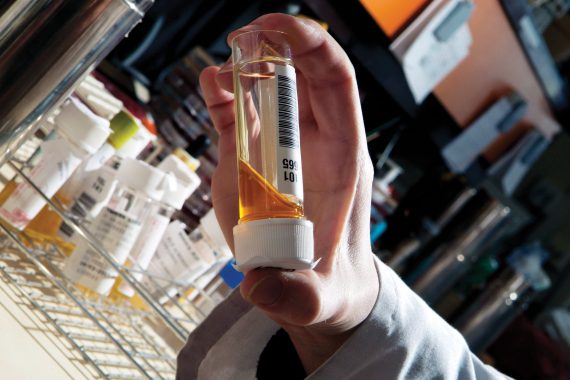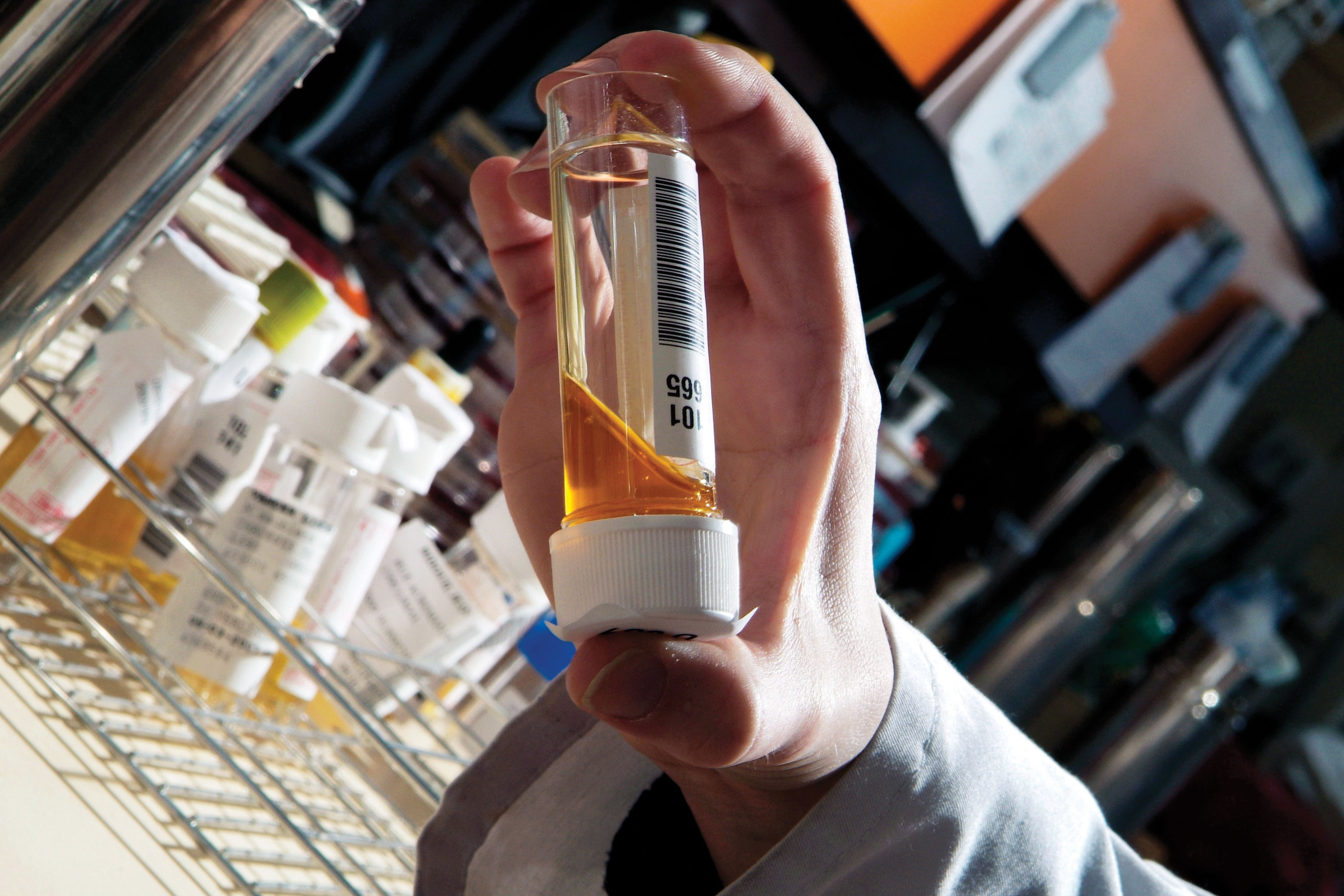Referral of the month – hypertension with NVH


Dear consultant,
I’d be grateful for your help regarding this 55-year-old man’s blood pressure and non-visible haematuria. He is an infrequent attender who has no significant past medical history. He is a non-smoker who drinks minimal alcohol. He first presented a few months ago for an unrelated matter, when an opportunistic blood pressure measurement was noted to be elevated at 175/110. Ultimately, he had a 24-hour blood pressure measurement, which showed a daytime average of 160/100.
Since that time we have tried the usual antihypertensive regime. He is now on perindopril 8mg/day, amlodipine 10mg/day and indapamide 2.5mg/day, with good compliance – but his blood pressure remains high.
His blood tests – including eGFR – have been normal, but on two out of three urinalyses, we have noted blood (but no protein). His PCR was normal.
So, in summary, the issues are:
1 Does this man’s hypertension need further investigation, given the lack of response to medication?
2 What would you add to his regime at this point and in the future to control his BP?
3 Does non-visible haematuria in the absence of proteinuria suggest possible renal disease? Should he also be seen by a urologist to exclude a structural cause for this?
Many thanks for your help,
GP
Dear GP,
Thank you for your detailed letter. I don’t think he would get value from an outpatient appointment, but we would be happy to see him if you think he would benefit from reassurance, or if the advice in this letter doesn’t help.
Many people with asymptomatic NVH turn out to have parenchymal kidney disease if subjected to full investigation – most commonly, thin basement membrane nephropathy or early chronic IgA glomerulonephritis. However, there are no treatments that alter the natural history of these diseases, which in the absence of albuminuria usually have a good prognosis – other than blood pressure control. The clinical approach to blood pressure control is the same whether or not there is parenchymal kidney disease. Some more serious diseases can cause haematuria – vasculitis, for instance – but it would be extremely uncommon for vasculitis to present without any other symptoms or signs, such as skin rash, arthritis, myalgia, ENT symptoms or neurological symptoms.
Your letter mentions a normal urine PCR. However, the protein assay used in this test lacks sensitivity for minor degrees of proteinuria, as does routine dipstick urinalysis. So I suggest you get an early morning urine sample for albumin:creatinine ratio. If this is more than 70mg/mmol, he should be offered an appointment for us to see him, in accordance with NICE guidelines. The combination of this degree of albuminuria with haematuria is much more likely to be associated with potentially progressive kidney disease, and would warrant consideration of a kidney biopsy to look for specific treatable causes.
The second reason we might add value to his care is his apparently resistant hypertension. According to the NICE guidelines, step four is to add further diuretics – 5mg indapamide if the serum potassium is >4.5mmol/l (even though this dose isn’t mentioned in the BNF) or spironolactone starting at 25mg daily if the serum potassium is <4.5mmol/l.
It would be useful to know when his blood pressure was last known to be normal. If he has had untreated hypertension for a long time, we should expect it to take longer for his blood pressure to drop. You don’t state how you know his blood pressure is still high. If this is based on measurements in your practice, it would be worth repeating the ambulatory monitoring – or, get him to learn to measure his own, using a machine with an arm cuff, and get a week’s worth of morning and evening measurements as per NICE guidelines, in case he has white-coat hypertension.
Remember the ‘target’ for blood pressure is 10/5 lower for home or ambulatory testing, so we would be aiming for <130/85 based on home measurements.
If he is overweight, weight reduction will be of benefit. If he doesn’t take regular exercise, that would be at least as good as an additional drug treatment for blood pressure, even if it doesn’t result in weight loss. You should also check that his alcohol intake really is minimal.
Salt intake
Reducing salt intake will augment the antihypertensive drug treatment. The best way of assessing salt intake is to measure a 24-hour urine sodium excretion. Ideally this should be around 100mmol/day. Most dietary salt comes from salt present in processed foods – breakfast cereals and bread, for example.
If there any symptoms to suggest sleep apnoea, I suggest referral to a sleep clinic. Untreated sleep apnoea is a common cause of resistant hypertension, and successful treatment would drop his reading by up to 10mmHg.
Your letter provided information on his creatinine and eGFR, but not the serum potassium. If this was low, or even at the lower end of normal, prior to initiation of drug treatment, we should consider testing for hyperaldosteronism with a plasma renin and aldosterone.
Ideally, these tests would be done after a period of at least 10 days off all drug treatment.
If there are episodic symptoms to suggest phaeochromocytoma (panic attacks, tachycardia, tremor, pallor, headache), he should be investigated. Plasma metanephrine and normetanephrine are the best tests if available locally. The sample needs special treatment and would need to be taken in hospital.
Your third question was about referral to exclude malignant disease as a cause of the NVH. The new NICE cancer referral guidelines do not suggest that patients with asymptomatic NVH be subjected to these tests, and I think they are right. The yield for cancer from investigating such people is probably no higher than if you investigated unselected people of the same age without haematuria. A defensive position would be to ask your local urologist.
Key messages
- Sleep apnoea is a common cause of resistant hypertension, with treatment reducing blood pressure by 10mmHg
- Symptoms of panic attacks, tachycardia, tremor, pallor and headache should be investigated to exclude phaeochromocytoma
- At step 4, add further diuretics – increase indapamide dose if potassium is >4.5mmol/l
- Consider hyperaldosteronism in resistant hypertension, especially if potassium is low, or at the lower end of normal
- Many people with NVH and hypertension have parenchymal kidney disease – but the clinical approach is much the same
Thank you for the referral.
Yours sincerely,
Dr Charles Tomson
Dr Charles Tomson is a consultant nephrologist at Newcastle upon Tyne Hospitals NHS Foundation Trust.
Pulse July survey
Take our July 2025 survey to potentially win £1.000 worth of tokens

Visit Pulse Reference for details on 140 symptoms, including easily searchable symptoms and categories, offering you a free platform to check symptoms and receive potential diagnoses during consultations.












